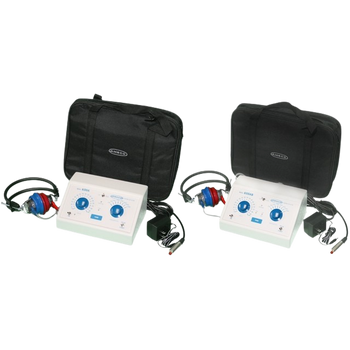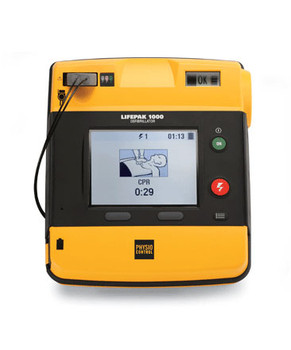Description
AMBCO 1000+ OTO-SCREEN Digital Audiometer
AMBCO’s 1000+ OTO-SCREEN Digital Audiometer the industry’s newest and only pure tone audiometer with sequential screening. This unique instrument advances the pure tone air conduction threshold and screening tests for hearing. Sequential screening eliminates fatigue factor, while the hands-off screening gives the operator complete control of testing. The OTO-SCREEN is microprocessor controlled resulting in accurate, consistent hearing tests.
5-year limited warranty is included.
1000+: non-printing digital audiometer
1000+P: printing digital audiometer
Specifications:
- Meets or exceeds ANSI 3:6 – 1996. ANSI 3.21 1978 (R 1997) Methods for pure-tone threshold audiometry
- O.S.H.A.C.H.D.P. and other requirements
- Standard Mode - dB (Threshold Level) 0 to 90dB in 5dB steps.
- Frequency Range: 250, 500, 1000, 2000, 3000, 4000, 6000, 8000 Hz.
- OTO-SCREEN Mode - dB (Threshold Level) 10 to 35dB in 5dB steps
- Frequencies presented sequentially: 1000, 2000, 3000, 4000 Hz.
- Easy to read displays, quiet soft membrane switches to facilitate testing.
- Portable package with padded bag, weighs 5 lbs.
OTO-Screen Sequential Testing:
- The Model 1000+ & 1000+P OTO-SCREEN is a standard threshold & screening audiometer with the option of sequential testing.
- By the push of a button the sequential mode allows the operator to select the screening dB (Threshold). (10-35 dB in 5dB steps).
- Sequential screening is conducted at the school testing frequencies, 1000, 2000, 4000 Hz or the medical screening at 1000, 2000, 3000, 4000 Hz.
- The screening starts with a 40 dB familiarization tone.
- A positive response by the patient with the patient response switch initiates the sequential test tones presented at 1000 Hz, 2000 Hz, 3000 Hz, and 4000 Hz to each ear.
- Sequential testing proceeds only after each timely response.
- If there is no response of a false response the fail light alerts the operator.
- Tones are presented at random to eliminate second guessing.
- Timely responses advance to the nest frequency until both ears are tested.
- A pass light indicates to the operator the test was completed successfully.
- The operator is in control and can select standard threshold or screening mode by the push of a button.







